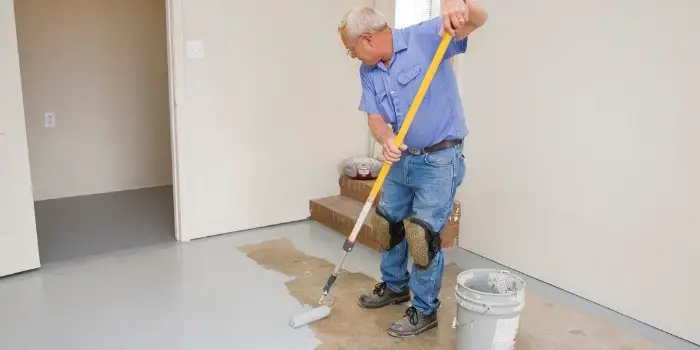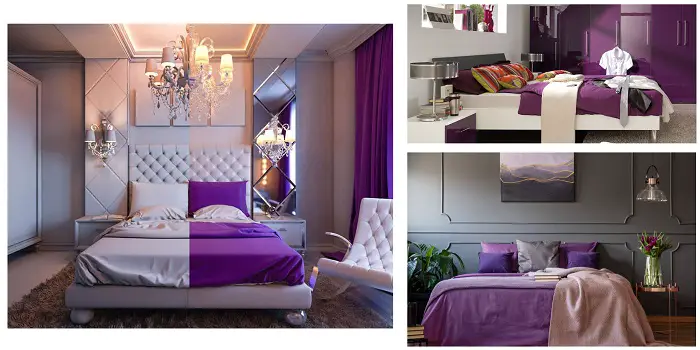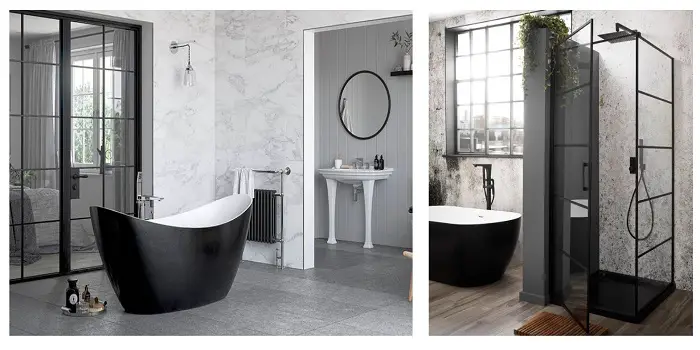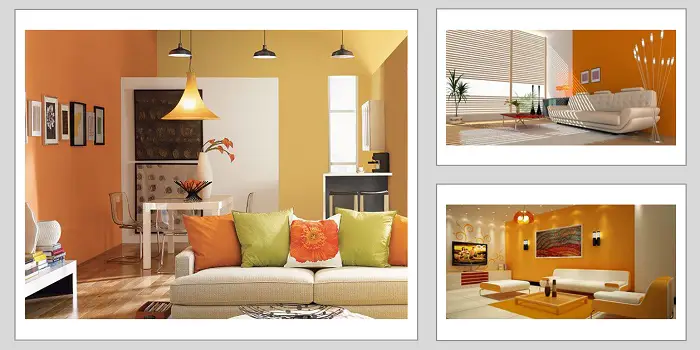
What kind of garage do you have? Is it the standard detached or an attached type to the house?
Do you have plans to change it in any way, like adding a door or windows? Maybe painting it is on your “To Do” list, and you’re looking for some ideas.
Paint can be a great way to improve the look of your garage without breaking the bank. Whether you’re looking to brighten up the space with a new hue or want to make it more resistant to the elements, painting your garage area is always a good option.
When choosing the right paint color, there are, however, some questions you need to ask yourself. In this post, I’ll give you some tips on what color to choose for your dream garage and why.
Stick around; there might be a color that catches your eye.
What's Here in the Article:
1- What’s the ideal paint color for my garage walls?
Your garage walls take a lot of abuse, so it’s important to choose a paint color that can withstand wear and tear.
Neutral colors like white, beige, tan, or light gray are always safe bets, but if you want something with a little more personality and a soothing touch, try a bolder hue like red, green, or blue. Neutral hues offer versatility in design choices, are easy to clean, and require less maintenance.
No matter what color you choose, be sure to pick high-quality satin finish paint that will stand up to the rigors of your garage. These paints are more durable, resistant to mildew, and easier to clean than flat finish paints. In high-humidity areas, consider using semi-gloss interior paint or exterior paint, which offers increased moisture resistance.
2- What color to paint my garage ceiling with?
When it comes to choosing a color for your garage ceiling, first and foremost, consider the functionality of your area. If it’s simply a storage space, any light shade will do. But if you also use your garage as a workshop or a place to work on projects, you’ll want to choose a color that will make it easier to see.
White is always a good choice for ceilings because it reflects light well, but you can also choose a light blue or green.
The second thing to consider is the climate. If you live in an area with a lot of humidity, you’ll want to avoid dark colors as they can absorb moisture and create a breeding ground for mold.
Instead, opt for lighter colors that will help to keep the space well-ventilated – I know how it felt more open and airy when I painted the ceiling in my garage with Benjamin Moore’s white.
Finally, you’ll also want to think about the style of your home. If it’s a contemporary home, a bright color like yellow or red might not be the best choice. But if your home has more of a traditional look, then a darker color like navy blue could be just what you’re looking for.
Remember, once you’ve painted your garage ceiling, you won’t be able to change it without repainting the entire space, so it’s important to choose wisely and make sure it’s one that you’ll be happy with for years to come.

3- What are the best colors for my garage door?
The color of your garage door significantly impacts the overall aesthetic of your home. For instance, in light-colored homes, opting for a dark-colored garage door (like dark brown, charcoal gray, jet black, etc.) creates contrast and enhances visual appeal. Conversely, if your home is dark-colored, a light-colored garage door (like white and beige) can brighten the exterior.
Consider the style of your garage door as well; for traditional wooden tone doors, a dark stain or paint color complements the natural grain, offering a classic look. Steel or aluminum doors offer more color flexibility—match it with your home’s palette or go for a bold contrast with bright colors like red or yellow to make a statement.
Remember, once painted, changing the color isn’t easy, so choose a color you’ll be satisfied with long-term.
4- What color should I paint my garage floor?
Choosing the right color for your garage floor involves a balance of aesthetics, functionality, and personal preference. Lighter colors such as light gray or beige can make the space feel larger and more inviting, while also helping to conceal dirt and stains.
On the other hand, darker colors like charcoal or dark gray can lend a sleek and modern look to your garage, with the added benefit of hiding tire marks and dust. Neutral tones such as tan or earthy hues offer versatility and can complement various garage styles.
For those seeking something more distinctive, epoxy flake flooring provides a durable and slip-resistant surface with a speckled appearance, offering a unique touch to your garage. Alternatively, bold colors like blue, red, or green can inject personality and vibrancy into the space, though they may require more maintenance to keep clean.
Consider factors such as natural light, the intended use of the garage, and your willingness to maintain the floor when making your decision. Ultimately, choose a color that reflects your style, enhances the functionality of the space, and aligns with your maintenance preferences.

5- Is epoxy paint good for my garage floor?
Epoxy paint offers a cost-effective solution for concrete floors in a variety of industrial settings. Its durability outstrips that of standard paint thanks to the inclusion of epoxy in the paint mixture. This infusion enhances the mixture’s toughness, resistance to corrosion, and ease of maintenance. And hence if you are looking for an easy way to improve the look of your garage and protect your concrete floor, then epoxy paint is a great option.
Epoxy paint for garage floors is tailored to endure the heavy traffic and substantial weight typical in garage environments. Additionally, it boasts resistance against oil, gas, and other potentially damaging chemicals that could spill on the floor.
Applying epoxy paint to your garage floor is a relatively straightforward process, though it’s crucial to adhere closely to the provided instructions. After application, the epoxy paint requires a 24-hour curing period before you can safely park your car or walk on it.
When it comes to shades, epoxy paint offers a versatile range of color options including neutral tones for a clean aesthetic, bold shades for vibrant accents, metallic finishes for a modern look, and even custom colors to match specific design needs. Fluorescent options are available for high-visibility areas.
The choice of color depends on factors like the intended use of the space, desired aesthetics, and any specific requirements such as durability or chemical resistance. It’s crucial to select a high-quality epoxy paint product that adheres well to the substrate and meets performance expectations.
6- What colors make a garage look bigger?
Painting your garage a light color, such as white, cream, light blue, or light green, can create the illusion of a larger and more open space. Consider painting the ceiling a lighter shade than the walls to enhance this effect further.
Decluttering and organizing the space by storing items in bins or on shelves will also free up floor space and contribute to the sense of spaciousness. Additionally, adding mirrors can create the illusion of more space by reflecting light and the surroundings. By combining these strategies, you can transform your garage into a visually larger and more inviting space.
7- Lastly, what colors are best suited for my garage cabinets?
For a versatile and visually appealing option, consider a neutral palette such as light gray, brown, or beige for your garage cabinets. These colors provide a clean and spacious feel while also offering practicality in maintenance. If you want to add a pop of color, you can opt for accent cabinets in a complementary shade or even a bold color to inject personality into the space.
Feel free to experiment with brighter colors like red or blue, if you want something a little more fun and lively. Once you’ve settled on 1-to 2 colors you like, it’s time to sample the paint on your cabinets. This will give you a good idea of how the color will look in your space.
Once you’ve decided on a color, you should pick the right finish. Glossy finishes are more durable and easier to clean, but they can also show smudges and fingerprints more easily. Flat finishes are less durable, but they’re also more forgiving concerning imperfections.
Related FAQs
How much paint do I need for a 2-car garage?
To paint a 2-car garage, you’ll need approximately 1 gallon (3.8 L) of paint for every 100 square feet (9.3 m2). So if your garage is 200 square feet (18.6 m2), you’ll need 2 gallons (7.6 L) of paint to cover the space.
It’s always a good idea to buy a little extra paint, just in case you need it. You can always return unused paint to the store if you don’t use it all.
How much does it cost to paint a 2-car garage floor?
To paint a 2-car garage floor, you’ll generally need to purchase epoxy paint and a primer.
Epoxy paint typically costs around $50 per gallon (3.8 L), and primer typically costs around $30 per gallon (3.8 L). So if you need 2 gallons (7.6 L) of each, the total cost of materials will be around $160.
You may also need to rent a paint sprayer, which typically costs around $50 per day. So the total cost of painting a 2-car garage floor would be around $210.
Can you paint the inside of your garage with exterior paint?
Yes, you can paint the inside of your garage with exterior paint. However, it’s important to choose a paint specifically designed for use in garages. These paints are typically more durable and resistant to stains and fading than regular exterior paints.
Final Thoughts
A fresh coat of paint can make a big difference in the look of your garage, and it’s one of the most affordable ways to update your home’s exterior.
Picking the right garage paint colors can, however, be a daunting task. With all of the options available, it’s hard to know where to start. The good news is that with a little bit of information, you can make an informed decision and select the perfect paint color for your garage.
Share the post "Choosing Garage Paint Colors – What to Pick and What Not?"

Douglas Becker (aka Painter Doug) has over twenty years of experience as a painter in Adkins, Texas. At present, he resides in Florida with his family.
From painting multi-storeyed houses, condos, and apartments to large commercial buildings and small offices, he had served various customers in areas not only in Adkins but also in Southwest Florida, Sarasota, Naples, and many more. To know more about him check here.




